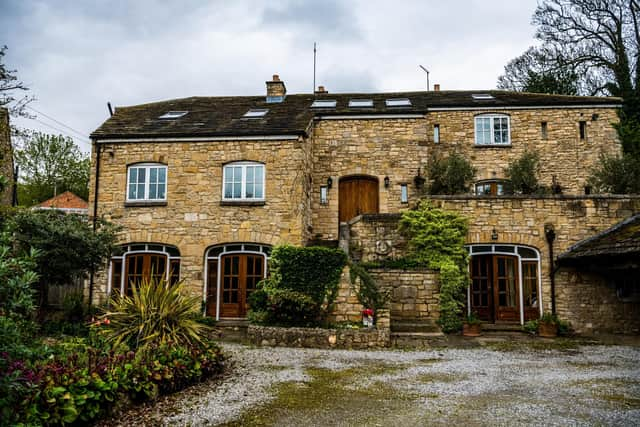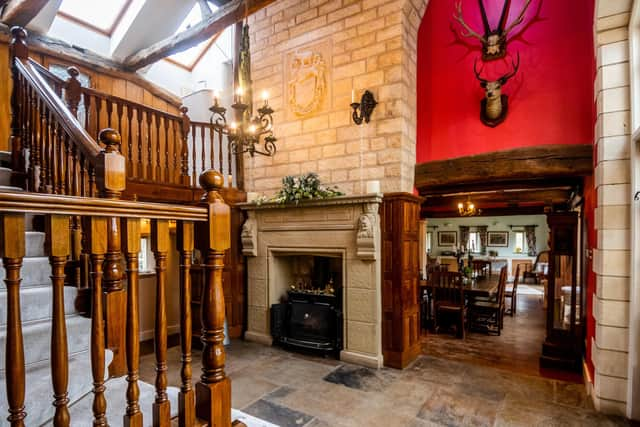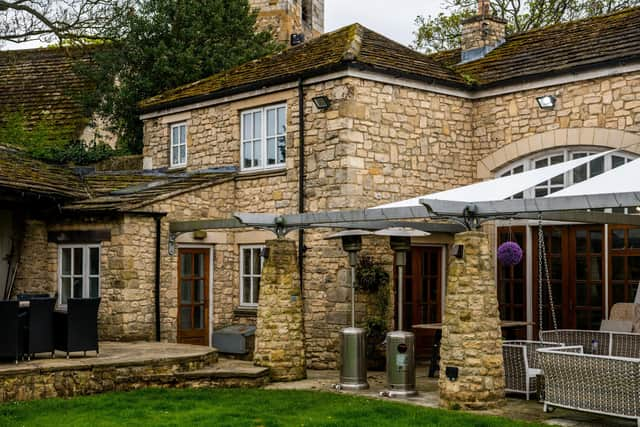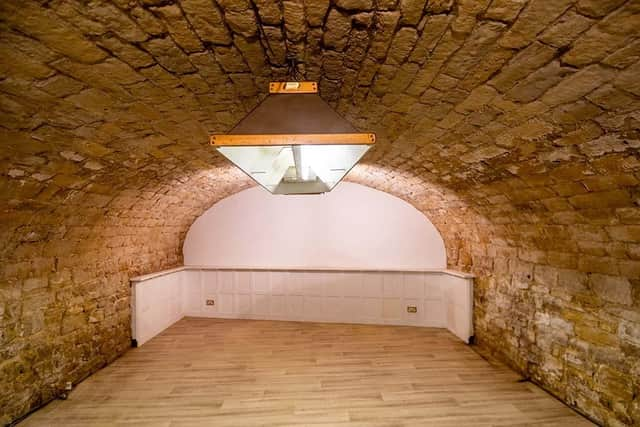Yorkshire House Histories: A 19th-century barn conversion in the estate village of Ledsham with underground vaults connected to an ancient church
Retired architect Chris McHale lives in Church Barn, beside the centuries-old chapel of All Saints. The barn itself is around 200 years old, and until the McHales bought the derelict farm building in the 1980s, it belonged to the Wheler family of nearby Ledston Hall.
Chris set about renovating the barn, and during the work discovered a series of vaults and underground tunnels leading to the church. One historian believes they point to the existence of a Saxon monastery on the site – possibly even the lost monastery of the ancient Kingdom of Elmete mentioned by the Venerable Bede – and Chris himself has a theory that the tunnels, which link to All Saints’ crypt, were used as an escape route during a period when England was still politically unstable, with regular Viking raids.
Advertisement
Hide AdAdvertisement
Hide AdHis home now appears modern despite its Georgian origins, when it would have been used by estate tenant farmers. One of his joiners even accidentally disturbed the skeleton of a man buried in one of the churchyard graves while ripping out a beam during the building work.


The house is popular with paranormal investigators, who have visited several times to study the vaults, but Chris has struggled to secure the attention of archaeologists despite the great age of the church next door. He has also found evidence, in both the contours of the land and street names, of quarrying on the site of the barn, and believes that it was where limestone used to build the Roman road that became the A1 was sourced.
The one who was captivated by the Saxon vaults was Professor John McGuckin, who lived in Ledsham when he taught at the University of Leeds. He proposed the lost monastery theory, and pointed out that during the period, monasteries were not organised religious houses like they later became, but farming settlements attached to prominent churches. He believed that the stone had come from York, indicating a rich patron, and could even be recycled building materials from the Roman occupation.
"He wrote a piece about the vaults, but there’s been nothing since. I’ve had spiritualists visit, looking for ghostly monks, but there’s never been a proper archaeological survey that’s got to the bottom of it.
Advertisement
Hide AdAdvertisement
Hide Ad"The evidence above ground has been damaged by the quarrying, but Professor McGuckin was convinced it was the same site as the lost Elmete monastery. Back then, a large Roman villa with four or five bedrooms could be taken over for monastic use.”


Chris was amazed to find the barn was not listed, though it is within a Conservation Area, meaning he was able to strip and rebuild it, as it was in very poor structural condition.
"It’s renowned for being haunted. Derek Acorah (the late TV psychic) came round, and went into the tunnel that leads through to the church. He said it was ‘very active spiritually’. Three different paranormal groups claim to have seen the same thing, but I’ve not experienced much myself.
"The vault and the tunnel are four metres below ground, and there was some purpose to it. Perhaps in the fourth and fifth centuries people would have used them to run to the church for sanctuary during Viking raids. It’s plausible.”
Advertisement
Hide AdAdvertisement
Hide AdLedsham itself is a village that sprung up around farming and the Hastings family’s estate – later inherited by the Whelers – after the closure of the quarry, but Chris thinks it is likely an older settlement built around the important church was there originally.


"It’s a limestone area, and there’s an incline for a horse and cart track that would have taken the stone to the Roman road.The quarrying went right up to the church boundary, and you can still see part of the face. I’d love to nail down the dates when it was open, and to know why such a prominent church was built here. It’s never been resolved.”
For now, the vaults – which were once the McHales’ billiard room – are used to store gym equipment, and Chris and his wife are considering downsizing.
"We bought it when Granville Wheler decided to sell off some of the farms. Most of the village is still owned by the estate.
Advertisement
Hide AdAdvertisement
Hide Ad"This house is a job never done! It’s a bit too big for us now my children have left home, and we will have to make a decision in a few years.”


Chris is keen to hear from any archaeologists or historians interested in investigating the vaults further. Contact him on [email protected].
Would you like to be featured in House Histories?
We now have a series of houses lined up for the next few months, from Dales farmhouses to an Edwardian property in Bradford with an unlikely role in television history, an old canal warehouse in Leeds, a vicarage-turned-maternity home in York, a Victorian holiday villa in Filey to a residence on Harrogate’s exclusive Duchy estate.
But we would still like more homes to feature – particularly if you live in a part of Yorkshire not mentioned above. You don’t have to know extensive detail about the property’s history – an outline will suffice – and it doesn’t have to be centuries old. Perhaps it had a famous resident or scandalous past, or was built for a purpose to serve a railway, factory, canal or estate. Email [email protected] if you’d like to be considered.
Here’s a recap of the first in the series – a Salt cottage in the Bradford mill village of Saltaire
